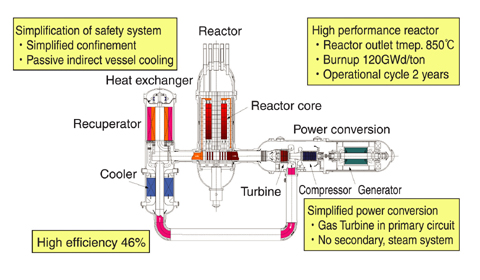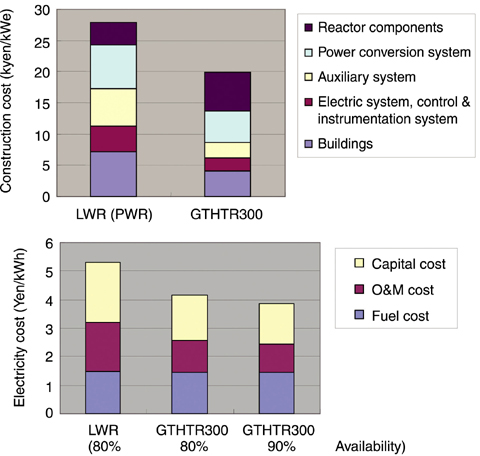
Fig.7-21 Technical features contributing to excellent economics

Fig.7-22 Cost comparison between LWR and GTHTR300
We have been developing an advanced electricity generation system using the Gas Turbine High Temperature Reactor 300 (GTHTR300) to contribute to reducing greenhouse gas emissions and preventing climate change. The 850°C reactor helium gas coolant is directly used to power a gas turbine for generation of electricity (Fig.7-21). The efficiency of electricity generation is as high as 46% which is substantially better than the 33% of the Light Water Reactor with a 300°C steam turbine. The design simplicity is another important feature of the GTHTR300, which does not include a secondary system and a steam supply system, as does the LWR. The HTGR, designed to be inherently and passively safe, is limited to a low power density of 6MW/m3 which makes its core larger in size than the LWR. On the other hand, the unique strong safety features result in design simplicity of the GTHTR300 engineered safety system.
The fuel, consisting of ceramic coated particles, is highly resistant to irradiation and is capable of maintaining integrity in fuel burnup of 120 GWd/t or higher. However, the fuel fabrication is a complex and thus costly technical process.
Considering the merits and drawbacks of the system, we have evaluated the economics of the GTHTR300 and compared it with that of the current large scale LWR. The economic evaluation reflects the system basic design. The estimated capital cost per unit of electricity is approximately 25% less than that of the LWR (Fig.7-22 (a)). The fuel cycle cost is comparable with that of the LWR, since the high fabrication cost is offset by the low backend cost because the amount of spent fuel is only about 1/3 of the LWR, which reduces the reprocessing cost. The cost of operation and maintenance is about 35% less than that of the LWR because the use of chemically inert helium gas as reactor coolant simplifies maintenance of reactor components.
In sum, the GTHTR300's net cost of electricity generation with a plant usage rate of 80% is estimated to be ¥4.2/kWh, as opposed to the ¥5.3/kWh of the LWR (Fig.7-22 (b)). The GTHTR300 thus offers an economically competitive option for nuclear power generation.
This design study was entrusted by MEXT.
<Previous: 7-7 | Next: 8 Nuclear Fuel Cycle Technological Development >